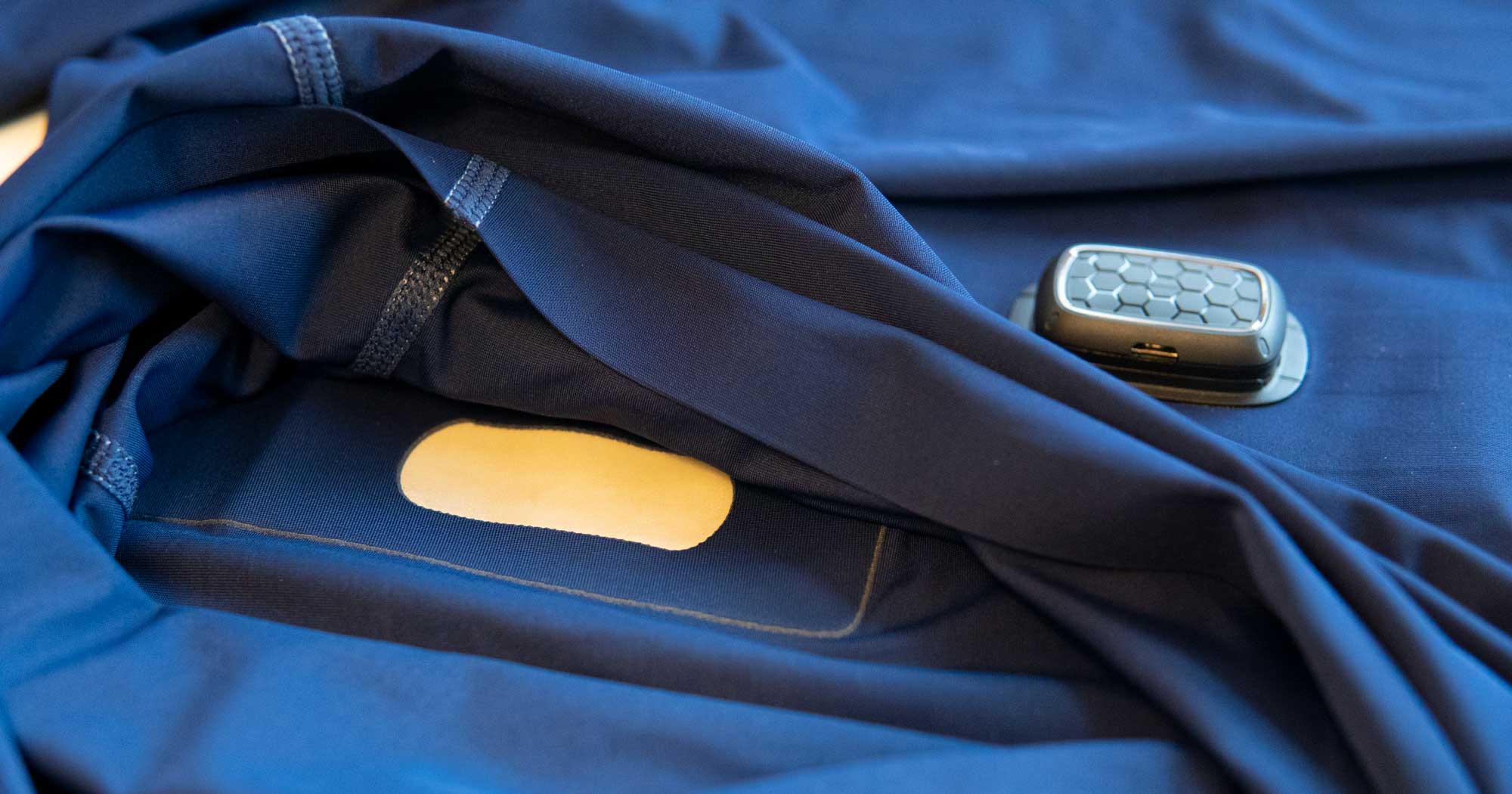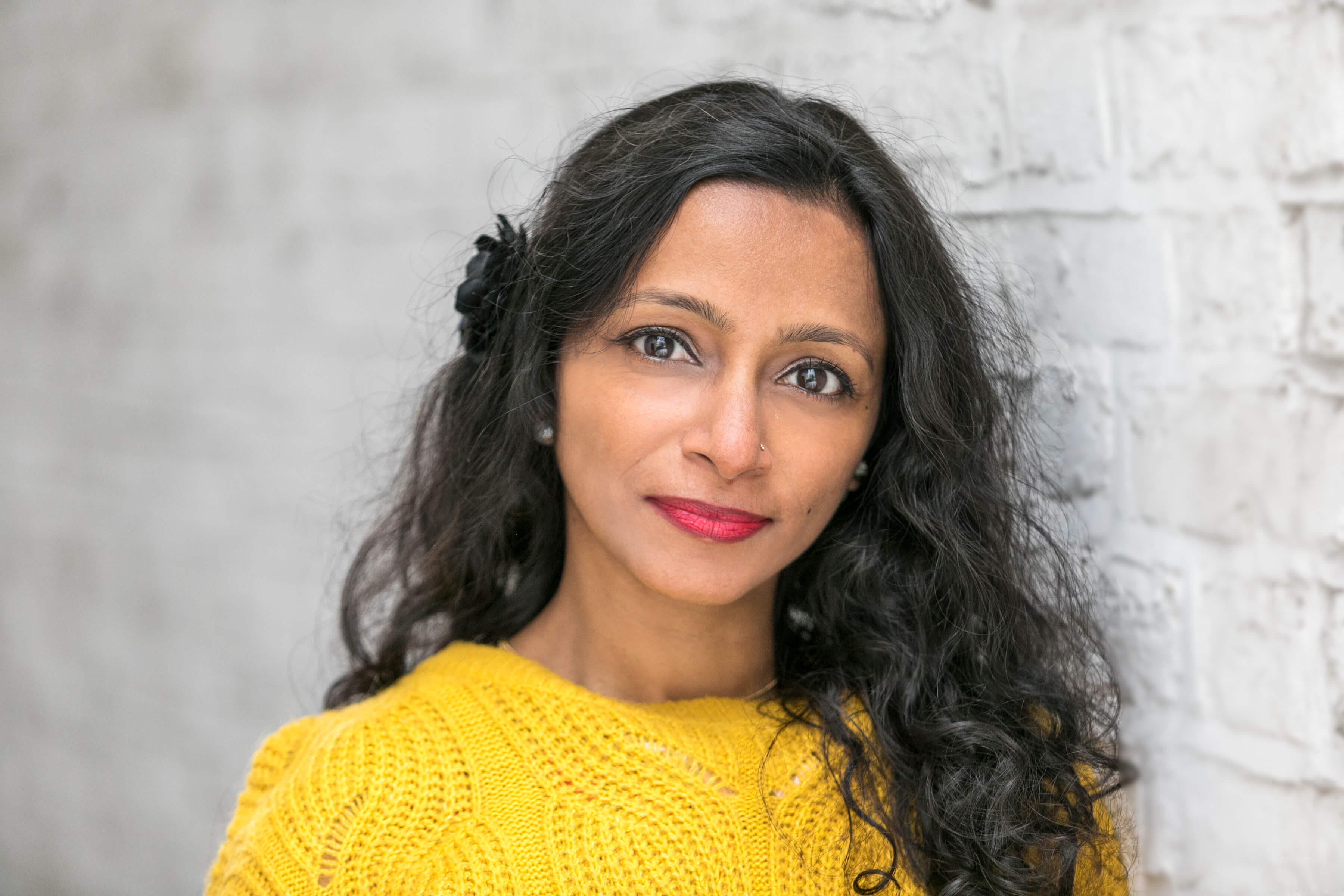
Founder of the newly launched Smart Textile Alliance, Christian Dalsgaard, and business associate Mili Tharakan, tell Fiona Haran about their aim to innovate the smart textile industry by codifying standards and providing technical support.
The innovation that is emerging from the smart textile market is very promising to see, as companies and research labs continue to develop solutions for many needs – from remote health monitoring wearables to heated garments and haptic technologies etc. At the same time, many of these developers are tackling some of the widely reported hurdles that often hinder commercial growth: washability, comfortability and scalability being just a few that spring to mind.
The biggest challenge, however, remains the absence of shared standards – the reason being that the smart textile industry lacks a coherent ecosystem and overseeing body. However, all that could be set to change thanks to a brand-new initiative.
Launched in October, Smart Textile Alliance is a not-for-profit and member-driven organisation that aims to promote plug-and-play solutions for developers of smart textiles and soft electronics, while providing a platform for fabric or garment manufacturers to forge new partnerships.
It was founded by Christian Dalsgaard and Mili Tharakan, industry specialists with years of experience in this niche but growing market. Dalsgaard, head of Smart Textile Alliance, established the company Ohmatex in 2004, which develops physiological and environmental sensors for inclusion in medical devices, sportswear, and protective clothing. After sealing a large contract with the European Space Agency he took a step back from the company in 2019 to pursue some other projects. He officially left Ohmatex in March this year but remains a co-owner.
Tharakan, business associate at Smart Textile Alliance, has been practising in this field since 2004. She founded and led the Smart Textiles Innovation Lab at Welspun (one of the largest home textile manufacturers in Asia) and went on to develop, manage and launch smart home textile products on the global market with the company’s corporate start.
Together, the business partners intend on using the new platform to share their own experiences of the industry to support others with their smart textile projects.
Discussing the catalysts that led to the initiative, Dalsgaard says: “What came to my mind is that it’s so difficult to scale up nearly all the products that we have seen come out of smart textile developments – and that’s not just the case for companies like Ohmatex, it’s what I have seen in every single corner, whether it’s Google or a start-up in Silicon Valley with tens of millions of dollars available for the development.”
“We all struggle with the issue that there is a lack of plug-and-play components, and that results in a lack of standards,” he continues. “These components as well as the structure in the supply chain create a very expensive development of smart textiles because you need to invent how the yarns are interconnected, how to mould housing into a fabric, and how to create connectors that are suitable for on/off solutions. You also need to determine what type of standard you should adopt in regard to care, washability etc. There is no complete package that fits to smart textiles.”
Tharakan echoes this sentiment. “For me, it’s the reality that I’ve faced while trying to build up a smart textile product and take it to market. I realised that these frustrations are faced by every other company who’s trying to explore this space,” she says.
“There are always amazing ideas that we come across but people are really struggling to take them to market and survive there. Because first, the supply chain is so fragmented, and secondly, the industry has existed at the periphery of the electronics and textile industry who are big giants in themselves, but this is kind of in the gap. It hasn’t had one body that is overseeing the development of smart textiles and bringing the technology, electronics and textile companies to the table to make decisions together,” she adds.
Developing the structure
Dalsgaard and Tharakan sought inspiration from other industries, including electronics and textiles, to see how they dealt with standards.
“We had the opportunity to discuss this with the founders of the USB and Bluetooth,” says Dalsgaard. “It came to our mind that this is very similar to what has been seen previously in technology developments: solutions that are proprietary with a more coherent roadmap – things that can work together.”
The pair have therefore been working on a structure that works very similar to those of the USB Implementers Forum and Bluetooth Special Interest Group – non-profit and member-driven organisations formed to support the advancement and adoption of their respective technologies.
“These are independent entities where companies can become members, they can have an equal right to use all the IPs that are pooled together, and they can have their product certified so that the end-user can be sure that this works together,” says Dalsgaard. “And we find that concept so attractive that we founded Smart Textile Alliance, and hope that we can now start engaging with those who have an interest in technology that can be part of their lines structure.”
“We saw how the [electronics] market grew because of the standards that [USB-IF, Bluetooth SIG and other such independent bodies] put in place, which gave developers and manufacturers a blueprint to follow,” adds Tharakan. “Everyone was clear as to what the rules of the game were and to play by. We were quite inspired by that and again, in a more textile context, the Woolmark that you see in our clothing, it’s the stamp that says, ‘this is certified wool, this is following certain standards and certifications’. So, we have standards in textiles but we don’t have anything specifically in smart textiles, and we feel that’s the next big hurdle that we need to cross to help this industry take off.”

Smart apparel from the company Bodyplus utilises fabric sensors to measure heart rate and breathing rate. The smart textile market is expected to reach US$5.5bn by 2025, with a CAGR of 30.4% over the forecast period, according to Grand View Research. Health and sports are the fastest growing sectors
Service features
To achieve successful standardisation, it is important to have a clear idea of the components that should be included in this process. That’s why Dalsgaard and Tharakan developed the Smart Textile Stack – a comprehensive framework to group these components together. These include handling & care, hardware & software, electronic connectors, fibre & fabrics, interoperability, and sustainability.
“Each of these components need to play into each other, as we’ve often seen that everyone has built one part of it and then it’s failed because it’s not interoperable with the rest of the system or the ecosystem doesn’t exist,” says Tharakan. “We thought there has to be a solution to this, there must be something we can do, because we are both passionate about smart textiles and we’ve worked in the industry for a very long time, so we’re trying to nudge this forward and see innovation and growth in the industry.”
Smart Textile Alliance also comprises the Support Lab – engaging in a range of activities, from training and advisory services, to matchmaking investments and coordinating expert panels – to help a member choose the ‘best possible route’ for standardised solutions.
“The idea behind the Support Lab is that we know that a lot of textile companies and electronics companies haven’t been in the smart textile space before,” Dalsgaard explains. “They want to sign up on the idea of preparing products in a standardised fashion. How can they prepare the development so that they don’t run into common issues by building things up from scratch? So, we have set up the Support Lab as a way of helping people identify and be included in a framework, a community where they can prepare the smart textile development.”
Common ground
The interdisciplinary nature of smart textiles is the primary reason why the market has lacked a controlled ecosystem to date. The role of Smart Textile Alliance is to therefore promote uniformity among industries.
“If you could control everything – from the yarn to the connector to the electronics, you would be able to achieve scalability, but that’s not how the world is,” says Dalsgaard. “There are some pretty good suppliers of yarns and they have a huge set-up of machinery that can make really good conductive yarns. And then you have other companies that have two lanes for making exceptionally good connectors, but these two have not been in touch previously, so to make a smooth supply chain there needs to be interaction between those who have these competences and that can transform smart textiles from something that is niche to really scalable solutions.”
Achieving such a desired outcome would then drive the ability to target various end-uses, as Dalsgaard explains.
“If you have a conductive sensor for measuring humidity, why not have that as a component that can be used in firefighter suits and outdoor jackets and sports apparel, because it can be integrated into a lot of other elements. That’s basically the idea – to gain a common platform so that players can benefit from this. We know it’s ambitious but this is the level we need to jump to,” he says.
Tharakan adds that the aim of Smart Textile Alliance is not to ‘just write up papers with standards’. “There is a need for that also, but what we want to look at is the really good solutions that people have come up with already,” she says.
“If you give written standards to people it is so much slower to develop them and for people to adopt them,” she continues. “The industry is too young to be able to write up standards – you need to give people actual components, whether it’s a textile company that is new to smart textiles or an electronics manufactures exploring the next new thing they want to develop.
“We’re hoping that we can help companies adopt smart textile opportunities by bringing more plug-and-play solutions to the space so that everyone can focus on applications, rather than how to make everything. That should be the easy part.”
Making connections
Since launching Smart Textile Alliance and presenting about it at WTiN’s Innovate Textile & Apparel virtual trade show in October, Dalsgaard says that he has made some good connections who are now waiting on the next steps.
“Mili and I are working on trying to engage with those who have already developed smart textiles and who we know have an interest in the field to see if we can identify solutions that could potentially be a common standard for these two areas,” he says.
Further progress will result from establishing collaborative R&D because ‘the bottom line is that it’s the way innovation happens nowadays’, he adds.
“You can include universities, institutions, companies, partners, and you can have support on your development. It’s a good way to get off the ground, and that’s something Mili and I are keen to do,” Dalsgaard continues. “The role of Smart Textile Alliance is important: we can support you and you can help us to identify technologies that can potentially create a standard for connectivity or washability and so on.
“We cannot solve everything, there will still be a lot of things that companies need to develop themselves, but at least we can guide them in the rudimentary areas. We think that this will be a standard that will win and therefore allow them to introduce a product on the market.”
To learn more about Smart Textile Alliance, visit www.smarttextilealliance.com
Have your say. Join the conversation and follow us on LinkedIn








